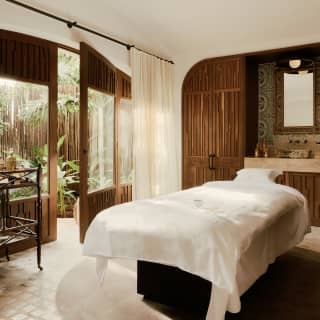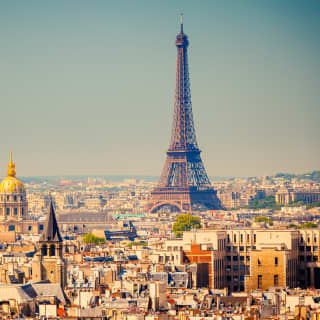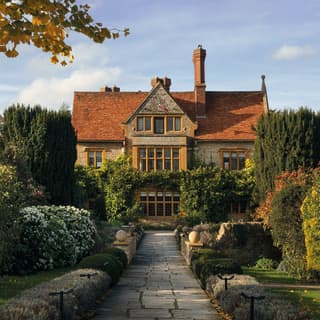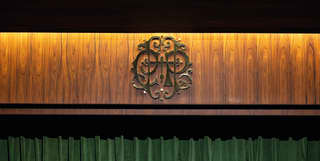
Belmond Legends
Discover the legendsNew from Belmond
L'Observatoire Carriage

VENICE SIMPLON-ORIENT-EXPRESS
L'Observatoire Carriage
L’Observatoire is an entire carriage for exclusive use, imagined by the pioneering French artist and photographer JR.
Inspired by Renaissance cabinets of curiosity, JR worked with both old masters and up-and-coming trailblazers to inject a level of detail never-before-seen in a train carriage.
Maroma Spa by Guerlain

MAROMA
Maroma Spa by Guerlain
Step inside a serenity of ancient Mayan wellness at Guerlain's first spa in Latin America.
Located within Maroma, a Belmond Hotel, Riviera Maya, the spa is a haven of peace for body, mind and soul, through the rituals of the ancient Maya. The exclusive treatment menu is inspired by Guerlain’s signature methods of wellness, incorporating traditional holistic healing experiences linked to natural elements and ancient practices of the Riviera Maya.
Explore Malaysia by Rail with the finest champagne

Veuve Clicquot
Explore Malaysia by Rail with the finest champagne
APRIL 22–25, 2024
Embrace the allure of the rails on a once-in-a-lifetime journey that delves into the soul of Malaysia, paired with Veuve Clicquot champagne.
Encounter breathtaking beauty as you depart north from Singapore and rumble deep into the Malaysian countryside. On this exclusive trip, Veuve Clicquot bring their distinctive savoir-faire to the rails with a series of tastings, events and special inclusions along the way.
Grand Champagne Voyage

Moët Hennessy
Grand Champagne Voyage
JULY 21–28, 2024
This Summer, join us on our finest floating villa for a tranquil journey into the very soul of the Champagne region, courtesy of world-renowned wines and spirits house Moët Hennessy.
Onboard Coquelicot, revel in a picturesque six-night cruise with gourmet dining designed by your special chef and disembark for exclusive oenology workshops, unique wine-tasting sessions and private tours of the Maisons Ruinart, Krug, Dom Pérignon and Moët & Chandon.
Journey to the Land of the Sun

Elle Brazil x Hiram Bingham
Journey to the Land of the Sun
Embark on an exquisite journey to Machu Picchu aboard Hiram Bingham, A Belmond Train. As our train celebrates its 20-year anniversary, we've teamed up with Elle Brazil to honor two decades of vintage railway luxury – and now, you can be part of our story.
BREAKING BREAD WITH CURTIS STONE

Culinary Mexico
BREAKING BREAD WITH CURTIS STONE
To inaugurate our 'Breaking Bread' series with celebrated chefs, join Chef Curtis Stone at Woodend, his new restaurant at the heart of Maroma, A Belmond Hotel, Riviera Maya.
In the video, watch as the Michelin-starred restaurateur talks us through the birth of his new haute-cuisine-meets-wood-fire-grill restaurant in the heart of the Mayan jungle.
Browse our Latest Offers

Family Time in London
At The Cadogan, spoil the ones you love with sensational quality time together as a family and savings for your second room.
Take me there
Discover Iguassu Falls
Perfect for families, get closer to the heart of Iguassu and be pampered at our relaxing rainforest retreat in Brazil.
Take me there
The Suite Life in the Riviera Maya
At our newly renovated oasis in Mexico, book this exclusive offer and receive $300 USD resort credit towards your stay.
Take me there
Enjoy a complimentary night in Paris
Book a luxury cruise aboard Les Bateaux Belmond in April or May, and stay overnight in the City of Light, the night before or after your journey.
Take me there
A Taste of Le Manoir
Calling all gastronomes: book a mid-week break at our Michelin-starred manor in Oxfordshire, where the best deal awaits.
Take me there
Stay Longer in Rio de Janeiro
Who could resist another night in paradise? Enjoy great savings when you book three or four consecutive nights at our beachfront icon in Rio.
Take me thereFamily Time in London
At The Cadogan, spoil the ones you love with sensational quality time together as a family and savings for your second room.
Take me thereDiscover Iguassu Falls
Perfect for families, get closer to the heart of Iguassu and be pampered at our relaxing rainforest retreat in Brazil.
Take me thereThe Suite Life in the Riviera Maya
At our newly renovated oasis in Mexico, book this exclusive offer and receive $300 USD resort credit towards your stay.
Take me thereEnjoy a complimentary night in Paris
Book a luxury cruise aboard Les Bateaux Belmond in April or May, and stay overnight in the City of Light, the night before or after your journey.
Take me thereA Taste of Le Manoir
Calling all gastronomes: book a mid-week break at our Michelin-starred manor in Oxfordshire, where the best deal awaits.
Take me thereStay Longer in Rio de Janeiro
Who could resist another night in paradise? Enjoy great savings when you book three or four consecutive nights at our beachfront icon in Rio.
Take me thereTravel Inspiration
Let’s run away together to somewhere picture perfect











